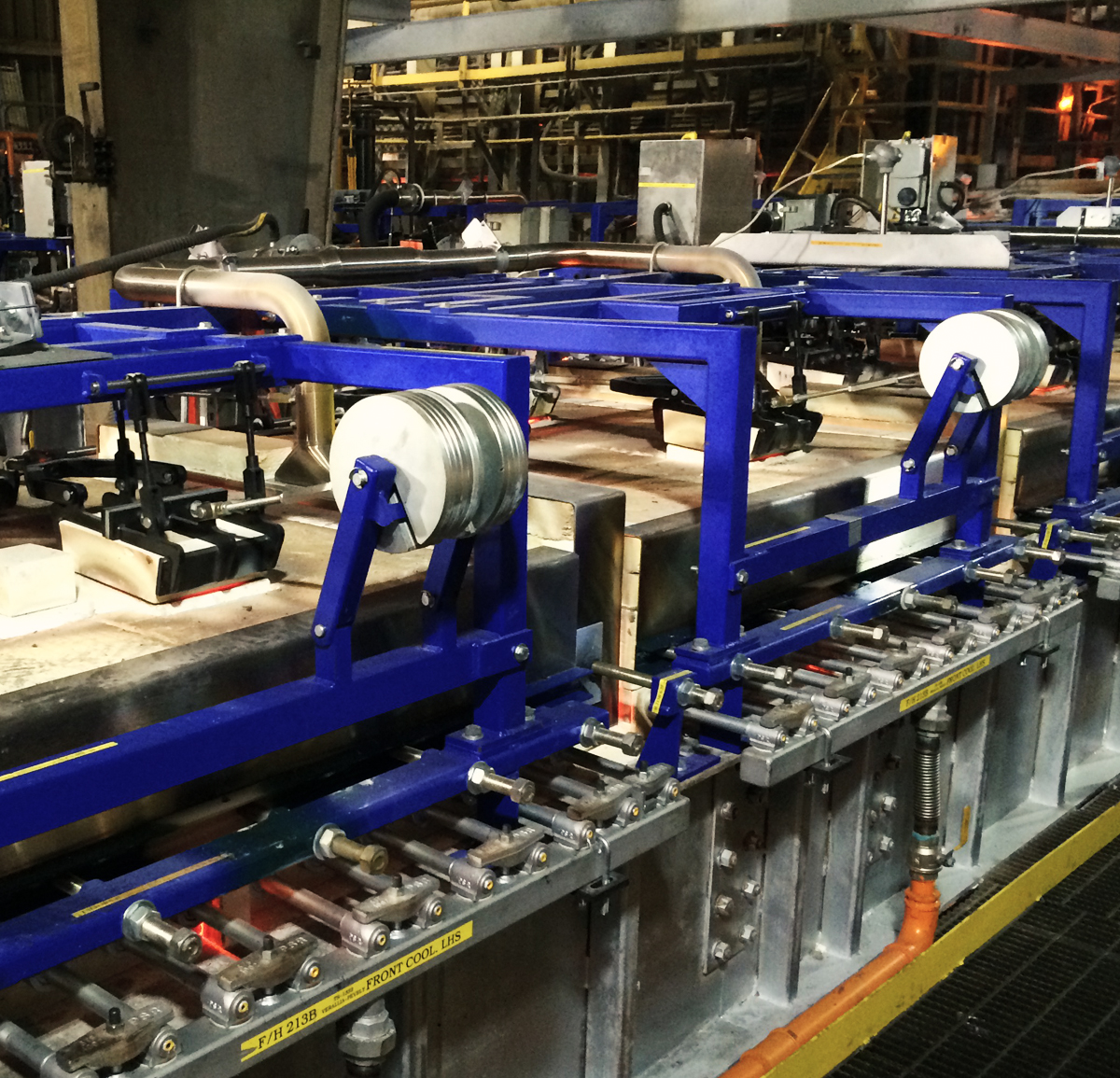The PSR System 500 Forehearth continues to lead the way, with its latest design features making it the most efficient solution for the glass conditioning process, providing glass manufacturers with up to 50% savings. Come and meet the PSR team and find out more about it at Glassman USA in Cleveland, Ohio on 6th – 9th June 2023.
PSR System 500 forehearth goes from strength to strength.

As concerns around climate change and sustainability continue to grow, companies across every industry are seeking innovative solutions to reduce their carbon footprint and improve their environmental impact. For an already energy intensive industry such as glass, the conditioning process is the leading factor, and its optimisation is only growing in importance.
Energy efficiency can be viewed from two distinct perspectives:
- Reduced fuel consumption.
- Increased glass quality and production to reduce the fuel consumption per tonne of glassware sold.
The System 500 Forehearth continues to lead the way, with its latest design features making it the most efficient solution for the conditioning process, providing glass manufacturers with up to 50% savings.
Single Piece Profile Roof Block Design: The design of the roof block allows the redirection of radiant heat from side wall burners to flow back towards the channel side walls. By separating the cooling zone transversely into dual longitudinal combustion zones and a central longitudinal cooling zone, the forehearth can overcome additional heat loss through channel sidewalls, during the cooling of the hotter central stream of glass. This allows for reduced gas consumption during usage and effective control of glass thermal homogeneity.
Synchronized Control of Exhaust Dampers and Cooling Air Inlet: Regular direct radiation cooled forehearths often struggle to maintain a positive internal pressure when flues are open, with the resulting negative pressure leading to cooling of the sides of the glass flow and the reduction of combustion efficiency. With automatic, synchronised control of the cooling air inlet and exhaust dampers, the System 500 can achieve precise control of exhaust volumes and internal forehearth pressures. This leads to higher glass thermal homogeneity and increased combustion and cooling efficiency.
Ability to Heat as well as Cool the Glass: When no cooling air is required, combustion exhaust dampers are shut, however the design of the of the central cooling damper block allows for the exhausting of combustion gases through the central flue. By allowing heat into the glass across the entire forehearth width during heating mode, the forehearth reacts effectively to any changes in production and will reduce downtime between jobs.
Distributor as an Extension of the Forehearth: Traditional working ends are designed as an extension of the furnace, with combustion, cooling and temperature control systems based on furnace technology. In essence, this methodology cannot target the heating and cooling as effectively as required, thus leading to no conditioning before glass entry to the forehearth. We view the distributor as an extension of the forehearth, thus implementing forehearth technologies right from the throat riser, conditioning the glass right from the furnace and therefore maximising energy savings.
Automated Control System: Whether it is radiation or longitudinal cooling used, the manually controlled cooling dampers in conventional cooling systems require excessive cooling for the glass temperature to be controlled by the combustion system. For glass manufacturers, the result of this is additional fuel input needed to overcome this set cooling level. The system 500 utilises synchronised automatically controlled cooling and combustion. This allows for the elimination of the extra fuel required to overcome the set cooling level that occurs in conventional cooling systems.
Case study 1
Customer converted from a radiation cooled forehearth to the System 500.
- Maximum tonnage increased from 137 to 142 tonnes/day.
- Thermal homogeneity increased from 92% to 97%.
- Pack rate increased from 92.5% to 93.5% (5% absolute pack rate).
- Combination of increased tonnage and pack rate led to a payback time of under 3 weeks.
Case study 2
Customer operates two adjacent furnaces. Furnace A had three PSR system 500 forehearths and Furnace B had two forehearth and distributors that employ conventional direct longitudinal cooling.
- Study carried out over a 25-day period under equivalent operating conditions.
- All 3 System 500 forehearths consumed 380.0m3/day compared to the 2 conventional on the adjacent furnace which consumed 446.5m3/day.
- Each System 500 forehearth and distributor used 12.63 normalm3 of LPG perm2 of glass surface area per day.
- On furnace B, each forehearth and distributors used 19.11 normalm3 of LPG perm2 of glass surface area per day.
- The conventional system showed a 50% increase in specific fuel consumption over the PSR System 500.
- Assuming an average fuel cost of £0.80 perm3 of LPG, over a 10-year furnace campaign a saving of £588,090 was achieved by the System 500 on furnace A.
Having been introduced over 30 years ago, the System 500 forehearth and distributor remains as strong as ever. Continuous innovation and optimization ensure it remains capable of meeting the evolving demands of the glass conditioning market. With payback times of under 3 weeks, fuel savings of over £500,000, and re-usable equipment for subsequent rebuilds, the System 500 will provide benefits that can be reaped for decades to come.
Click here to find out more about Glassman USA. You will find us on Stand A9.